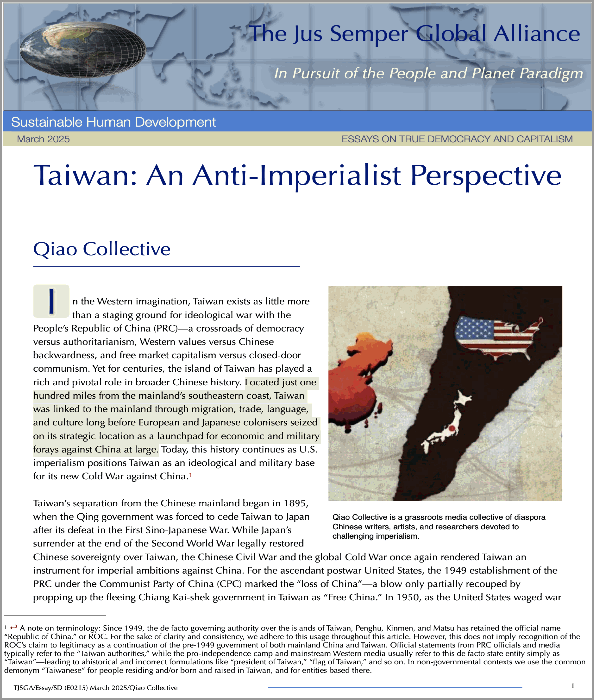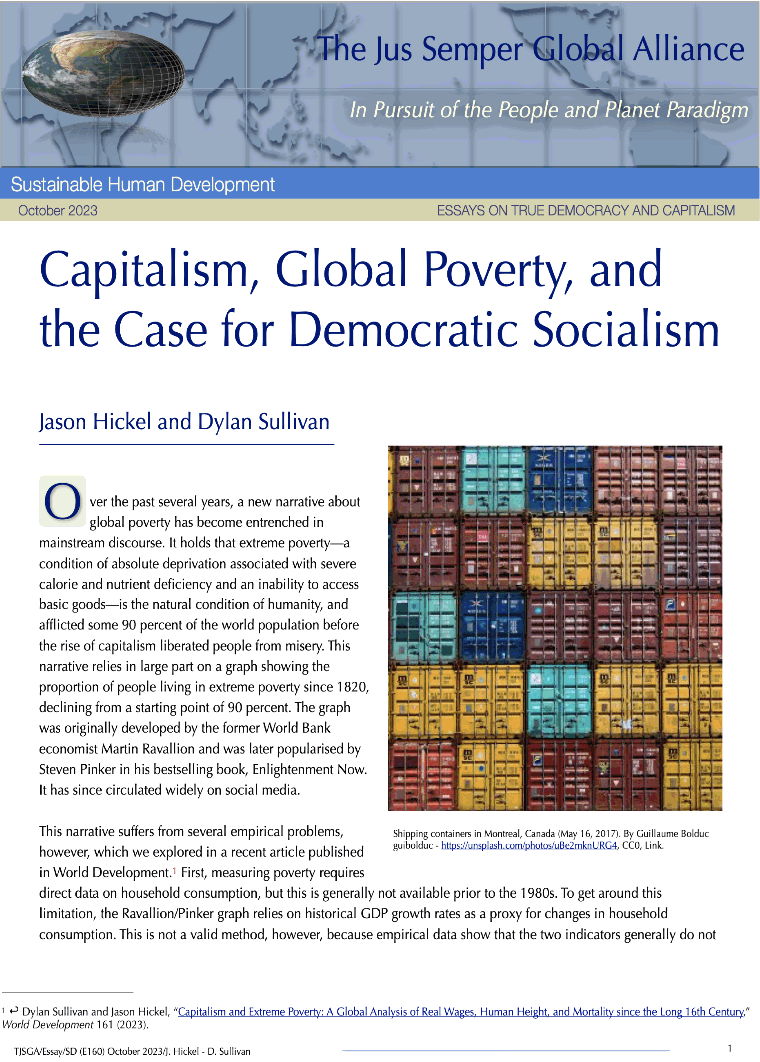the Case for Democratic Socialism Jason Hickel and Dylan Sullivan This narrative suffers from several empirical problems,however, which we explored in a recent article published in World Development. Given these issues, the standard public narrative about the history of extreme poverty needs reassessment. Toward this end, we took an empirical approach to examine the social impact of capitalist expansion and integration using data on real wages (with respect to the cost of basic needs), human height, and mortality since the long sixteenth century, for five world regions (Europe, Latin America, sub-Saharan Africa, South Asia, and China). This data points to three conclusions. First, it is unlikely that 90 percent (or even 75 percent) of the global population lived in extreme poverty prior to the rise of capitalism. Historically, unskilled urban labourers in all regions tended to have wages high enough to support a family of four above the poverty line. Extreme poverty seems to arise predominantly during periods of severe social and economic distress, like famines, wars, and institutionalised dispossession, which became particularly prevalent under colonialism. Rather than being the natural condition of humanity, extreme poverty is a symptom of severe social dislocation and displacement. The second conclusion is that the rise of capitalism coincided with a deterioration in human welfare. In every region we assessed, incorporation into the capitalist world-system was associated with a decline in wages to below subsistence, a deterioration in human stature, and a marked upturn in premature mortality. In parts of Latin America, sub-Saharan Africa, and South Asia, key welfare metrics have still not recovered. Our third conclusion is that in those regions where progress has occurred, it began much later than the Ravallion/Pinker graph suggests. In the core regions of Northwest Europe, welfare standards began to improve in the 1880s, around four centuries after the emergence of capitalism. In the periphery and semi-periphery, progress began in the mid-twentieth century. This corresponds with the rise of organised labor, the anticolonial movement, and other radical and progressive social movements, which organised production around meeting human needs, redistributed wealth, and invested in public provisioning systems. For a full read of this brief, click here or on the picture to download the pdf file.
|

- © The Jus Semper Global Alliance
| Home |  | Resources |  | Economic Data |  | Capitalism, Global Poverty, and the Case for Democratic Socialism |


